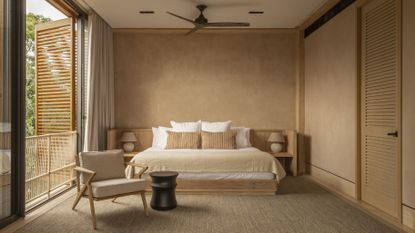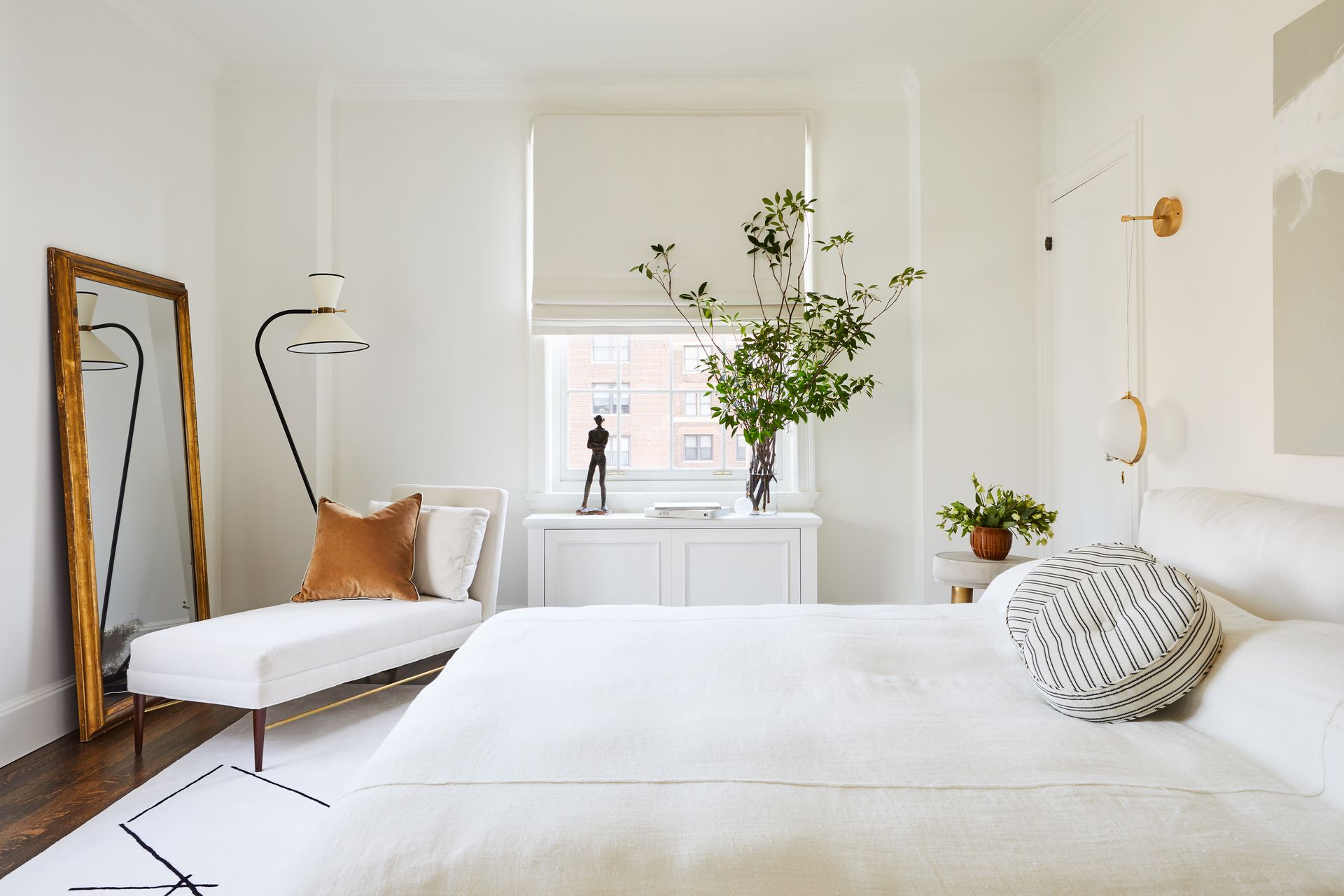What's the best direction to sleep in? Experts tells us which compass point is best, and which is ruining your rest
Unable to get a restful night's sleep and always tired? It could be down to the direction your bed faces, according to some experts


Sleep is the top of the list of things you can do to make yourself healthier, so why is it sometimes so hard to come by? Meditation, warm milk, and soft mattresses aside, there are some experts who say that the direction your bed faces could also be messing up your sleep routine.
There has been extensive research on the 'correct' sleeping direction, which of course is also guided by individual preferences and environmental factors. But there are a few key things to keep in mind when it comes to bedroom layouts and your posture. We asked experts to help out and here's what they had to say.
What is the best direction to sleep?

If you're wondering how to sleep better, then you want your bed to face south.
'Largely, the best direction to sleep scientifically is in the south position,' says Carlie Gasia, a Spencer Institute-endorsed Certified Sleep Science Coach at Sleepopolis. 'This is when you sleep with your head towards the south and your feet towards the north.'
'This ensures a better quality of sleep,' says Carlie. 'Some research shows that sleeping in the south direction lowers blood pressure and causes longer sleep overall. This is because sleeping in the south position aligns with the Earth’s electromagnetic field which is beneficial for better sleep quality.'
Which direction shouldn't you face when sleeping?
'Sleeping in the north direction is one of the worst directions to sleep in,' Carlie says. 'It creates tension that may lead to headaches and other health problems. It may also make it more difficult to fall into REM sleep which is not beneficial for a quality and balanced night’s sleep.'
Which direction should your head face?
How many pillows should you sleep with? How hard or soft should your mattress be? All these factors also contribute to the quality of your sleep.
'The direction of your head when sleeping will depend on many factors – your preferred sleeping positions, medical conditions, sleeping alone or next to someone, superstition etc,' says Lisa Artis, deputy CEO, of The Sleep Charity. 'But what’s more important is having the correct support. Did you know that your head weighs 4.5-5.5 kilos (10-12lbs) and that your neck contains seven of the spine’s 33 vertebrae? Did you also realize that neck pain, stiff necks, and even persistent headaches could simply be the result of poor pillow support while in bed sleeping?'
'A good pillow should hold your head in the correct alignment – that is, in the same relation to your shoulders and spine as if you were standing upright with the correct posture,' says Lisa. 'One that is too soft will allow the head to flop, curving the neck. One that is too hard will give you a crick in the neck.
As with shopping for a new bed, you should try out different types of pillows before making your final decision. If possible you should try out the pillow (or pillows) on a bed where you can lie down on your side. Ask someone to check if your neck and upper back are in a straight line. The pillows should be tucked well into the neck and shoulder to support the head fully.'
'Too many pillows will cause the spine to curve upwards and the skin to crease on the top of your neck,' says Lisa. 'Too low or thin a pillow will make the spine curve downwards and cause a crease on the underside of the neck.'
Is there a right or wrong side of the bed?

Bedtime rituals aside, is there a better side of the bed to sleep on?
'There is no wrong side; everyone has different needs from a bed and a particular side might feel more comfortable to them,' says Lisa. 'Choosing a side of the bed based on superstitions is more commonplace in younger adults, with 33 percent of 18–24-year-olds doing so. While there is no right or wrong to having a particular side, as that’s the preference of those sleeping in the bed – it is entirely dependent on an individual and their needs and preferences. Whether you prefer to sleep closest to the door or need complete darkness to drift off, what is right for you may not be right for someone else. We recommend testing your sleep environment and trying out different positions and conditions to determine the perfect sleep environment for you and your body.'
'We always say consistency is key when it comes to getting a good night's sleep including having regular bed/wake up times and a good bedtime routine and sleeping on the same side each night aligns with that – helping you to feel orientated,' says Lisa.
3 bedding products for a restful sleep

Dimensions: 26.00 x 16.00 x 5.00 Inches
Quantity: Pack of 2
Price: $59

Dimensions: 74 x 37.5 Inches
Fill material: 100% memory foam
Price: $129

Material: Metal and opal frosted glass
Light: LED light
Price: $19
Be The First To Know
The Livingetc newsletter is your shortcut to the now and the next in home design. Subscribe today to receive a stunning free 200-page book of the best homes from around the world.
Aditi Sharma Maheshwari is an architecture and design journalist with over 10 years of experience. She's worked at some of the leading media houses in India such as Elle Decor, Houzz and Architectural Digest (Condé Nast). Till recently, she was a freelance writer for publications such as Architectural Digest US, House Beautiful, Stir World, Beautiful Homes India among others. In her spare time, she volunteers at animal shelters and other rescue organizations.
-
 How to Thaw a Frozen Pipe — Learn Everything You Need to Know in 5 Minutes With This Guide
How to Thaw a Frozen Pipe — Learn Everything You Need to Know in 5 Minutes With This GuideWinter storm caught you off guard? We asked an expert — just how do you thaw a frozen pipe?
By Hugh Metcalf Published
-
 The 12 Very Best Silk Bedding Pieces — As Our Style Editor Says: 'It's What Dreams Are Made Of!'
The 12 Very Best Silk Bedding Pieces — As Our Style Editor Says: 'It's What Dreams Are Made Of!'Slumber in lustrous luxury with the very best silk bedding sheets, duvets, pillowcases, and more — your sleep score will thank us later
By Julia Demer Published

